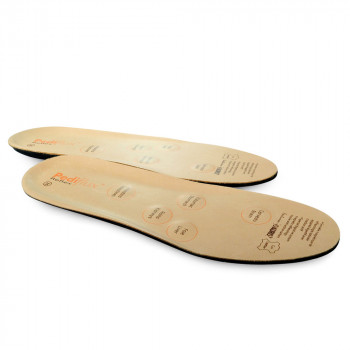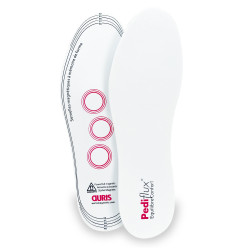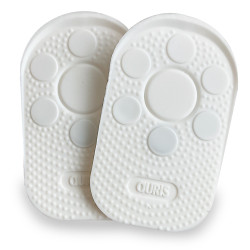Talalgia, or heel pain, is a common condition that can greatly affect your quality of life. Seniors are particularly prone to this type of pain because of the natural wear and tear on joints and tissues over time. This article explains what talalgia is, its causes and symptoms, and suggests simple solutions to relieve the pain.
What is talalgia?
Talalgia refers to any pain felt in the heel area. This pain can be due to a variety of causes, ranging from posture problems to specific conditions such as plantar fasciitis.
Causes of talalgia
Several factors can cause heel pain:
- Plantar fasciitis: This is the most common cause of talalgia. It is caused by inflammation of the plantar fascia, a band of tissue that connects the heel to the toes.
- Calcaneal spur: A bony growth that forms on the heel bone, often associated with plantar fasciitis.
- Achilles tendonitis: Inflammation of the Achilles tendon can cause pain at the back of the heel.
- Arthritis: Types of arthritis, such as rheumatoid arthritis or osteoarthritis, can affect the heel.
- Bursitis: Inflammation of the bursae, small fluid-filled sacs that cushion the bones, tendons and muscles near the joints.
Symptoms of talalgia
The symptoms of talalgia can vary depending on the cause, but the most common include:
- Sharp or stabbing pain in the heel, particularly in the morning or after a period of rest.
- Burning sensation or sharp pain.
- Swelling and tenderness to the touch.
- Difficulty walking or standing for long periods.
Solutions to relieve talalgia
1. Rest and ice: rest to allow your foot to heal. Apply ice to the heel for 15 to 20 minutes, several times a day, to reduce inflammation and pain.
2. Stretching and exercise: stretching exercises can help relieve the pain of plantar fasciitis and other heel conditions. Try rolling a tennis ball under your foot or gently stretching your Achilles tendon.
3. Orthopaedic insoles: the use of orthopaedic insoles, such as Auris magnetic insoles, can provide extra support and help to distribute pressure on the foot. Magnetic leather insoles are designed to improve blood circulation and reduce pain.
4. Appropriate footwear: wear well-fitting shoes with good arch support and a cushioned heel. Avoid flat shoes and high heels, which can aggravate pain.
5. Anti-inflammatory medication: non-steroidal anti-inflammatory drugs (NSAIDs) such as ibuprofen can help reduce pain and inflammation. Consult your doctor before taking any medication.
6. Physical therapy: a physiotherapist can help you learn specific exercises to strengthen the foot muscles and improve flexibility, thereby reducing heel pain.
Customer testimonial
Marie, aged 70, suffered from talalgia for several years. "The heel pain was unbearable, especially in the morning. I started using Auris magnetic insoles and stretching regularly. Within a few weeks, the pain had reduced considerably. Now I can walk without feeling this constant pain."
True/False: Test your knowledge of talalgia
True or False: Plantar fasciitis is the most common cause of talalgia.
True: Plantar fasciitis is indeed the most common cause of heel pain.
True or False: Wearing flat shoes is good for talalgia.
False: Flat shoes often lack arch support and can aggravate heel pain.
True or False: Magnetic insoles can help relieve talalgia.
True: Magnetic insoles, such as those offered by Auris, can provide extra support and improve blood circulation.
Talalgia can be a painful condition, but with the right management strategies, it's possible to relieve the pain and return to a normal quality of life. Simple solutions such as rest, stretching, the use of magnetic insoles and wearing appropriate footwear can make a big difference. Don't hesitate to consult a healthcare professional for a precise diagnosis and personalised advice.



